What Is a Golden Skin Tone? Colors, Makeup, and Style Tips

Key Takeaways
Know golden skin to be a warm yellow or honey tint that can be anywhere from light tan to deep brown. Check undertone in natural light using the vein test and how you look in gold jewelry and warm colors.
💫 Discover Your Complete Color Palette
Ready to discover all the colors that make you look radiant? Our comprehensive color analysis will reveal your complete personal palette - perfect for hair, makeup, and wardrobe decisions.
Take Color Analysis Quiz →Distinguish undertone from overtone to select precise makeup and skincare. Match foundation to your undertone and re-test shade seasonally as your overtone shifts with sun and lifestyle.
Understand the glow science – a combination of melanin, carotenoids and environment. Shield with broad spectrum SPF 30+ and consume carotenoid-packed foods such as carrots, sweet potatoes and leafy greens to nourish luminance.
Create an easy routine that honors skin's barrier with soft cleansing, light exfoliation, toner and daily hydration. Tune products with the seasons and monitor shifts to keep hyperpigmentation and uneven tone at bay.
Wear your warmth in yellow or golden based foundations, peach/coral blush and earth/myth metallic eye shades. Opt for golds, warm reds, coral, olive and ivory, and choose yellow or rose gold jewelry for a natural lift.
📚 Recent Articles
Defining a Golden Skin Complexion
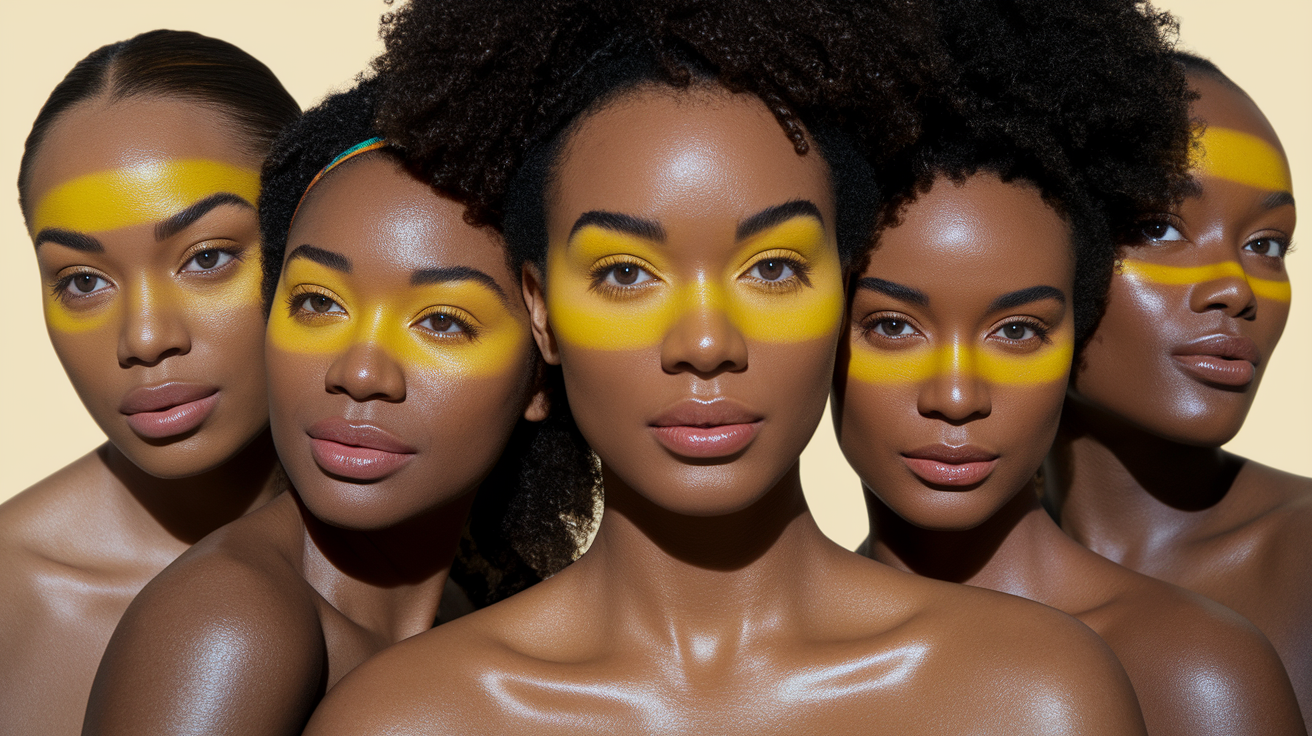
A golden skin complexion is in the medium range with yellow or golden undertones. It sometimes gives the impression of being light brown, or medium brown, or tan, with a gentle golden coloration that exhibits itself most beautifully in the sunshine. It's **warm undertone** – not cool or neutral.
It's so important to understand when choosing foundation, concealer, and bronzer that mix seamlessly and don't go ashy or orange.
1. The Undertone
Golden undertones reveal a soft yellow cast beneath the skin, most evident in natural light close to a window around noon. This aspect of **skin color** is not just surface; it's that subtle shade that remains constant even when your skin tans or whitens. Understanding your skin undertones is essential for choosing the right makeup products colors.
Versus the three traditional undertones — warm, cool, and neutral. Warm consists of golden and sometimes peach, which can beautifully complement fair skin. Cool leans blue/pink, while neutral rests in the middle, with no strong pull.
Olive is its own twist: a mix of neutral and warm with a slight green note that can make some warm shades look dull unless they have olive depth. Knowing your undertones can help in selecting the perfect foundation shade.
Apply the vein test on your inner wrist/forearm. If your veins appear green, you have a warm or golden undertone; blue or purple is cool, and a mix means neutral. It's the easy way, more dependable than guessing under store lights.
Gold jewelry looks vivid on golden skin, while silver flatters cool tones – many of us gravitate toward an appropriate metal naturally, enhancing our natural beauty.
2. The Overtone
Overtone is the color you see on the surface—everything from light tan to deep brown in golden skin. It's more than undertone shift.
Sun, acids, and sleep all nudge overtone. In the summer, they venture a shade or two darker; in winter, they retreat. Take natural light and a white sheet of paper or white wall to read your overtone without color cast from lamps.
3. The Genetics
Golden complexions tend to be hereditary and pop up in a number of populations such as Asia, Southern Europe, and the Mediterranean. Melanin type and quantity – influenced by a handful of pigmentation genes – determine both depth and undertone.
Family history may suggest your probable tone, and genetics connect hair color (dark brown to black, occasionally warm chestnut), eye color (amber, brown, hazel), and face contrast – which influence how colors appear against your skin.
4. The Look
Golden skin can read as beige, honey, or warm sand – balanced, not sallow. It tans easily and rarely burns, providing a constant, photo-friendly, sun-kissed glow.
Observe how your skin responds to sun, and which shades—camel, rust, olive, mustard, warm reds—make you glow. With skin tones ranging from fair to deep and shifting throughout the year, re-test your undertone with the vein test and let that guide shade selections to keep you true.
The Science of Your Glow
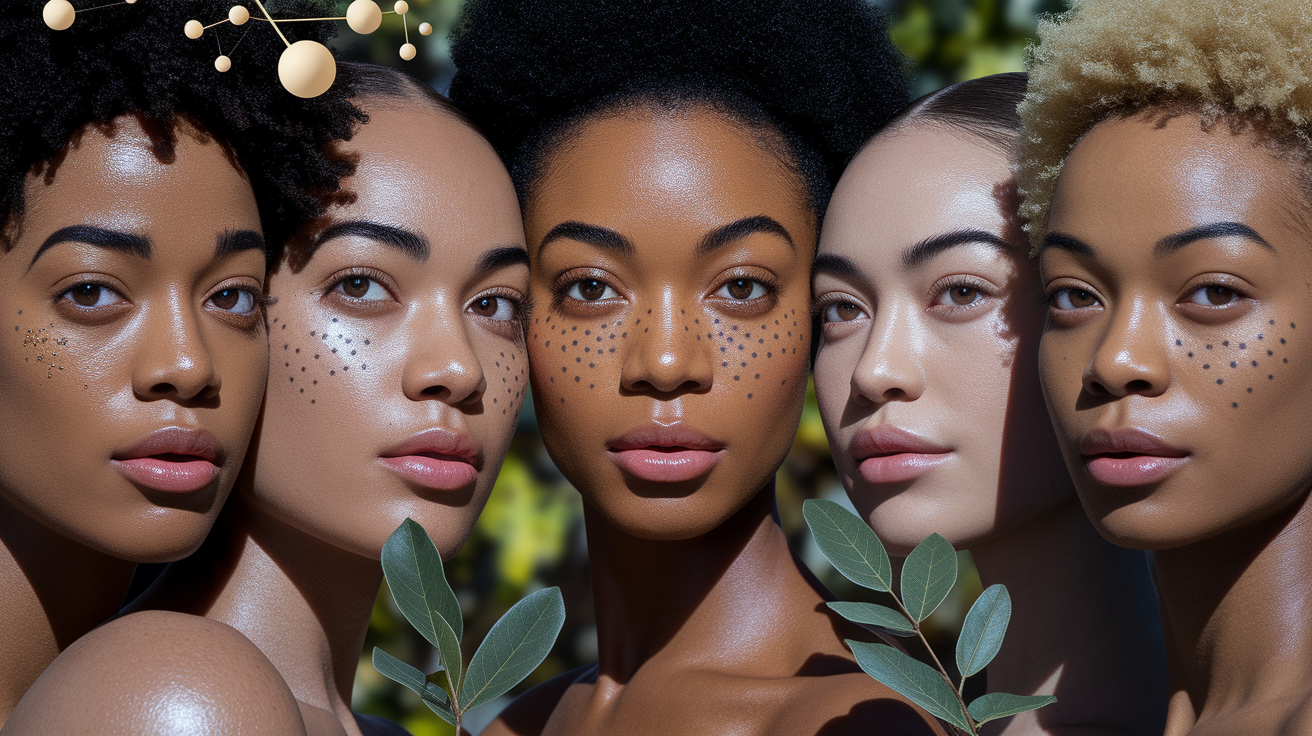
Golden Skin is an alchemy of melanin, carotenoids, and your day-to-day environment. Pigment levels and how they lay in the skin create **warm undertones**, while genes and habits influence the radiance of your skin color. Understanding these elements allows you to showcase your healthy skin without guesswork.
Melanin's Role
Melanin is the primary pigment responsible for skin tone and a vital defense mechanism against ultraviolet (UV) radiation. It sits in the epidermis, where its type and spread set undertone: when melanin is more evenly packed, the skin reads smoother and warmer; when clustered, it can look patchy or dull.
More melanin means tanning comes more easily and reduces the risk of burning, particularly for individuals with golden to brown undertones. It deepens color after sun, imparting that sun‑warmed, **golden glow** so many receive during the late summer months.
That depth is important. Eumelanin brings brown depth, and its ratio with pheomelanin can skew skin to honey or bronze. Together they determine how light bounces, which is why two individuals with similar shades can glow differently.
Benefits stack up: better baseline UV defense, slower visible aging from UV stress, and a tendency toward more even tone over time. That said, melanin is no excuse to ditch the sunscreen — UVA and UVB can damage any skin.
Carotenoids' Effect
Carotenoids are plant pigments from carotenoids-rich foods like carrots, sweet potatoes, spinach, and mango. They nestle in the outer skin and impart a delicate yellow‑gold veil that says healthy. Studies associate improved diet and fitness with brighter skin in roughly 8 weeks, matching carotenoid turnover in skin.
Regular consumption can boost luminosity and warm undertones sans sun. This compliments melanin’s underlying hue, so the glow appears natural rather than masked.
| Food (100 g) | Key carotenoids | Skin benefit |
|---|---|---|
| Carrot | Beta‑carotene | Subtle yellow‑gold tint, antioxidant support |
| Sweet potato | Beta‑carotene | Warmth boost, supports barrier health |
| Spinach | Lutein, zeaxanthin | Helps fight oxidative stress from light |
| Mango | Beta‑carotene | Adds soft golden hue, hydration support |
Carotenoids don't replace sunscreen, but they team with melanin to make that golden undertone feel richer and more vibrant.
Environmental Impact
Sunlight induces more melanin, enriching a tan and intensifying golden facets. Both UVA and UVB can hurt skin and increase cancer risk, and tanners take it to the next level—melanoma cases are on the rise globally, and UVA levels can be 10–15 times the sun.
Broad‑spectrum sunscreen SPF 15+, reapply every 2 hours, plus hats or shade are essential. You're aiming for even tan, not incineration.
Air pollution dulls glow by oxidative stress. A gentle cleanse and an antioxidant layer assist. Certain gold-infused skincare provides antioxidant support and may soothe chronic inflammation, reducing redness and maintaining tone even.
Gold's storied history in Egypt and China is one of "renewal," and today's formulas reference its antioxidant effect. Combine intelligent skincare with slumber, exercise and real foods. Improved health can shift your skin's tone in a matter of weeks and make your undertones more pronounced.
Nurturing Your Golden Tone
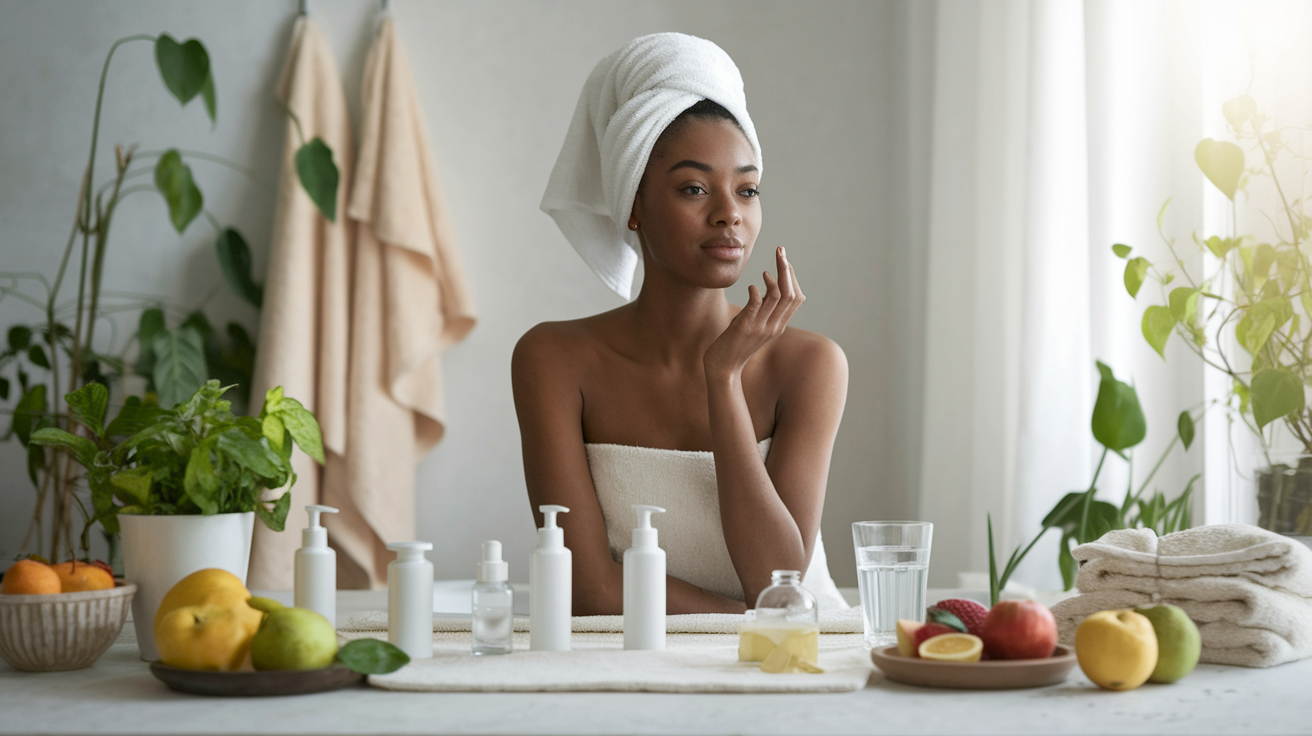
Golden skin can have warm, neutral, or olive undertones, which are common in several ethnicities, including Asian and Southern European. Organic skincare that works best when it matches your skin color, daily routine, and the season.
Skincare
To your golden glow:
- Mild wash morning and evening to clear sweat and SPF without drying.
- Light exfoliation 1-3 times a week to shed lackluster cells and unclog pores.
- Toner, alcohol-free, to re-balance pH and prep the skin for actives.
- Targeted serums: vitamin C for brightness, niacinamide for tone, hyaluronic acid for hydration.
- Moisturizer to lock in water and fortify the barrier.
- Broad-spectrum sunscreen SPF 30+ every morning, every 2–3 hours if outside.
Spritz with lactic acid or a gentle enzyme polish. This keeps buildup from muting a golden tone, but preserves natural oils. Excessive acids or too much exfoliation can ignite redness or post-inflammatory hyper-pigmentation, both of which show quickly on tan and **olive skin**.
Condition after washing while skin is moist. Seek out ceramides, squalane, or glycerin to trap water and stabilize the barrier. If your olive tone runs shiny, a light gel-cream still does the trick and won't deflate the glow.
Tend to your golden tone with a no-frills, fragrance-free formula that normalizes pH, soothes tautness and allows serums to absorb uniformly. It primes your golden tone so brightening steps do their deed without burn.
Nutrition
- Leafy greens (spinach, kale): rich in antioxidants that fight dullness.
- Carrots and sweet potatoes: beta-carotene supports an even, sun-kissed look.
- Citrus fruits and berries: vitamin C aids collagen and spot care.
- Nuts, seeds, and olive oil: healthy fats keep skin soft and bouncy.
- Fatty fish or algae-based omega-3s: soothe dryness and the look of redness.
Consume 1.5 – 2.0 liters of water daily, even more with heat or exercise.
Cut back on super-processed snacks and added sugar. They can cause breakouts and dull radiance.
Lifestyle
- Sleep 7-9 hours. Skin rejuvenates overnight and tone appears even.
- Diffuse stress with breath work, quick walks, or journaling — cortisol can spark oil shifts and marks.
- Don't smoke and limit your alcohol to keep dullness and early lines at bay.
- Get moving most days. Improved circulation provides a healthy, warm glow.
- Check your undertone in daylight following short sun exposure. Gold jewelry complements warm tones, and olive skin has a slight green tinge with a neutral-warm blending.
- Choose colors that fit undertone: golden brown eyeshadow, gold metals, and both cool and neutral shades can suit many golden complexions.
- Take a fresh look each season, boost moisture in dry months, increase SPF in summer, and always wear sunscreen to protect UV and maintain even tone.
Golden Skin Across Cultures

Golden skin means all sorts of things from culture to culture. It can indicate health, wealth, or beauty, but those signifiers move with history, weather, and social status. Human skin color is determined by numerous genes and influenced by geographic location. Genes like SLC24A5, KITLG, and TYR differ by population, accounting for broad stretches from deep brown to olive green to light beige. Golden or olive across too many cultures, we know, the worth placed on them is anything but universal.
In Asia, golden or yellowish skin instead reads as refined and well cared-for. Across cultures, it implies wealth and status as it suggests strong nutrition and shielded indoor or curated sun-time versus harsh exposure. Skincare rows across East and Southeast Asia advertise 'bright' or 'radiant' complexions, promoting healthy skin that embodies warm, even tones, which are often desired for a flawless foundation shade.
In South Asia, sun-kissed gold can be admired while in some circles pale, porcelain-like skin is still prized. Yet both ideals live side by side, influenced by local history, films, and familial standards. In the Mediterranean, for example, numerous individuals view a healthy bronze tan as a symbol of good health. Imagine late summer skin—olive with a warm glow—complemented by a life lived near the sea and sun, often celebrated through vibrant fashion choices.
In Latin America, golden hues generally associate with energy and vitality, but vary by nation and blend of Indigenous, African, and European ancestry. Across these cultures, golden can mean sun-kissed or simply warm-undertoned skin that looks vibrant, not pale. The interplay of skin undertones enhances the beauty of diverse backgrounds.
History demonstrates how quickly ideals can turn. Early humans most probably had pale, non-pigmented skin covered in dark hair, like chimps. As humans shed thick body hair and migrated into powerful sun, dark melanin-rich skin pigment arose around 1.2 million years ago, co-evolving with hairless skin and profuse sweat glands. That defended folate and protected against UV damage.
Subsequent migrations to lower-UV populations, shifts in diet, and clothing created new selective pressure. Today, environmental factors still matter: UV, diet, and lifestyle shape how skin looks, tans, and ages. Culture adds meaning on top. In certain African cultures, darker shades signify beauty, fertility and divine connection, whereas elsewhere, fairer shades accrued value through colonial legacies and socioeconomic divides.
The media and celeb fads continue to move the goalposts. Worldwide pop stars, K-drama leads, and telenovela icons establish moods that brands pursue—damp gold one season, porcelain radiance the next. Fashion weeks lean toward "healthy glow" looks, showcasing the importance of flattering gold colors in makeup products colors. Social feeds propagate bronzing hacks and SPF sermons simultaneously.
The net effect is mixed: wider acceptance of undertone diversity, yet pressure to hit a narrow "radiant" ideal. What helps most, though, is context—respect your natural undertone, implement sun care (SPF 30+), and interpret trends as possibilities, not commandments.
Styling Your Complexion
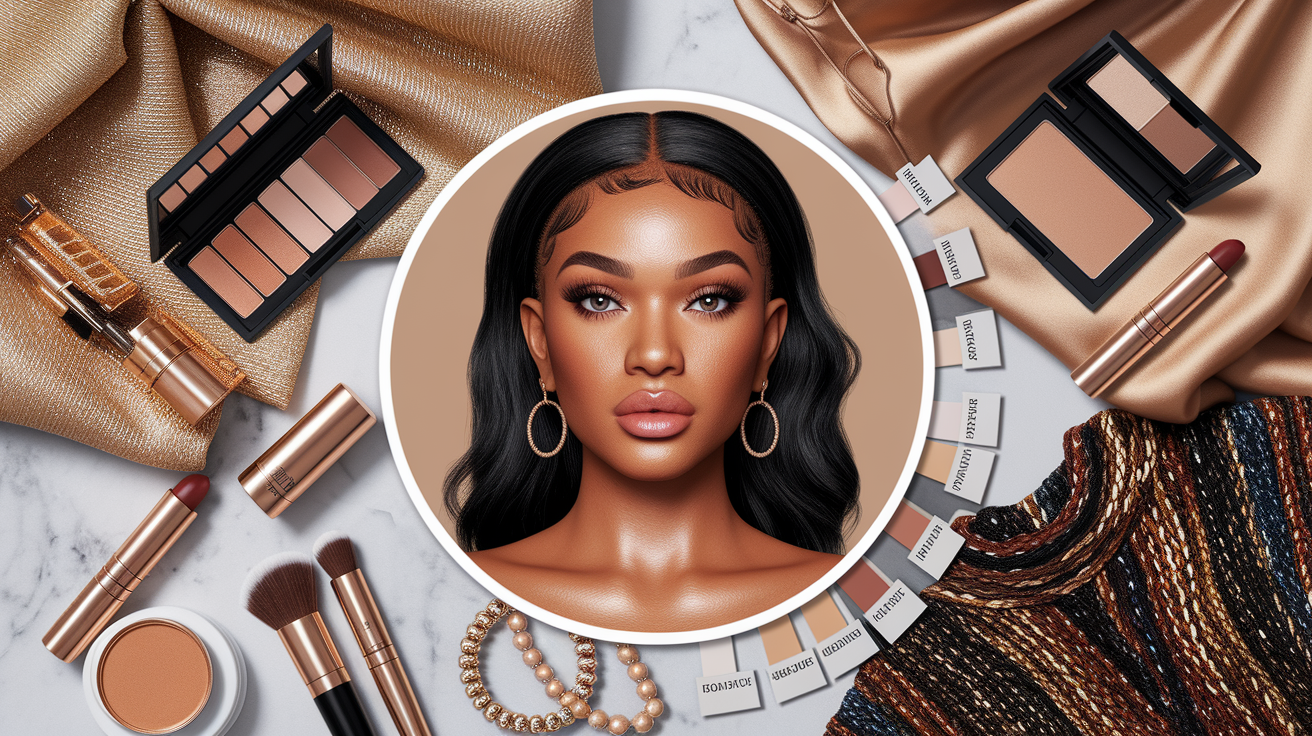
Golden undertones shine when shades reflect warmth without washing out the complexion. Begin by charting your undertone with a vein test–greenish veins mean warm, bluish mean cool and a mix means neutral.
Undertone remains consistent even when your shade changes seasonally, so reference a skin tone chart to select hues—makeup and clothing—that fall within the same warm spectrum or provide soft contrast. Earth colors — sand, sepia, caramel, the deep tonal reds — typically bring out a golden cast, while neutrals tend to provide a connective tissue for outfits spanning trends.
Makeup Colors
Pick foundations with yellow or golden undertones to match. Skip pink-based formulas that go ashy. Try on the jaw in natural light and verify it after 10 minutes, as some bases oxidize.
If your skin gets deeper in the summer, store on hand a half-shade deeper and blend as necessary. Blush in coral, peach or apricot gives life without fighting. Cream textures melt into skin, creating a soft, second-skin feel.
Powders add additional structure for photo days. Golden brown, soft bronze, terracotta, and metallic gold eyeshadows create a radiant finish. Think sand matte in the crease, caramel on the lid and a hint of gold in the middle.
For liner, rich brown flatters more than stark black for daytime. For lips, pass on cool purples and icy berries that mute your warmth. Opt for warm reds (tomato, brick), corals and nudes with caramel/honey tones.
Even blue, if it's a warm teal as opposed to an icy navy.
Wardrobe Hues
Construct a foundation of yellow-green, brown, ivory, coral, red and gold. These mirror warmth and make skin appear radiant. Reds are universal — think tomato or vermilion for that golden boost.
Then, style your complexion with olive, orchid and violet-red for composed contrast without sapping hue. Blue can be warm – turquoise or cool – cobalt, always go with the warmer side when near the face.
Best and worst colors for **golden skin tones**:
| Category | Colors |
|---|---|
| Best | sand, sepia, caramel, olive, coral, ivory, warm red, gold, terracotta |
| Good neutrals | camel, taupe, cream, warm gray |
| Use with care | stark white, icy pastels, cool lavender |
| Worst | icy blue, cool fuchsia, bluish purple |
Rotate seasonally: richer browns and deep reds in winter, coral, ivory and warm teal in the summer. Trends, schmends–wear what you BE-LEEEEVE in!)
Jewelry Metals
Go for yellow gold and rose gold, both of which convey warmth and illumine the skin. They go so nicely with earth-tone wardrobes and warm makeup.
Oxidized silver can lend dimension and edge — without the icy bite of white-everything. It compliments olive and sepia ensembles.
If white gold looks glaring, keep it away from the face, or warm it with stones. Undertones tend to be warm, cool and neutral — match metals to that undertone, then mix when the outfit demands it.
Styling your complexion, but a rose-gold ring, brushed yellow-gold cuff and petite oxidized silver pendant can all co-exist and still flatter golden skin.
Beyond the Surface
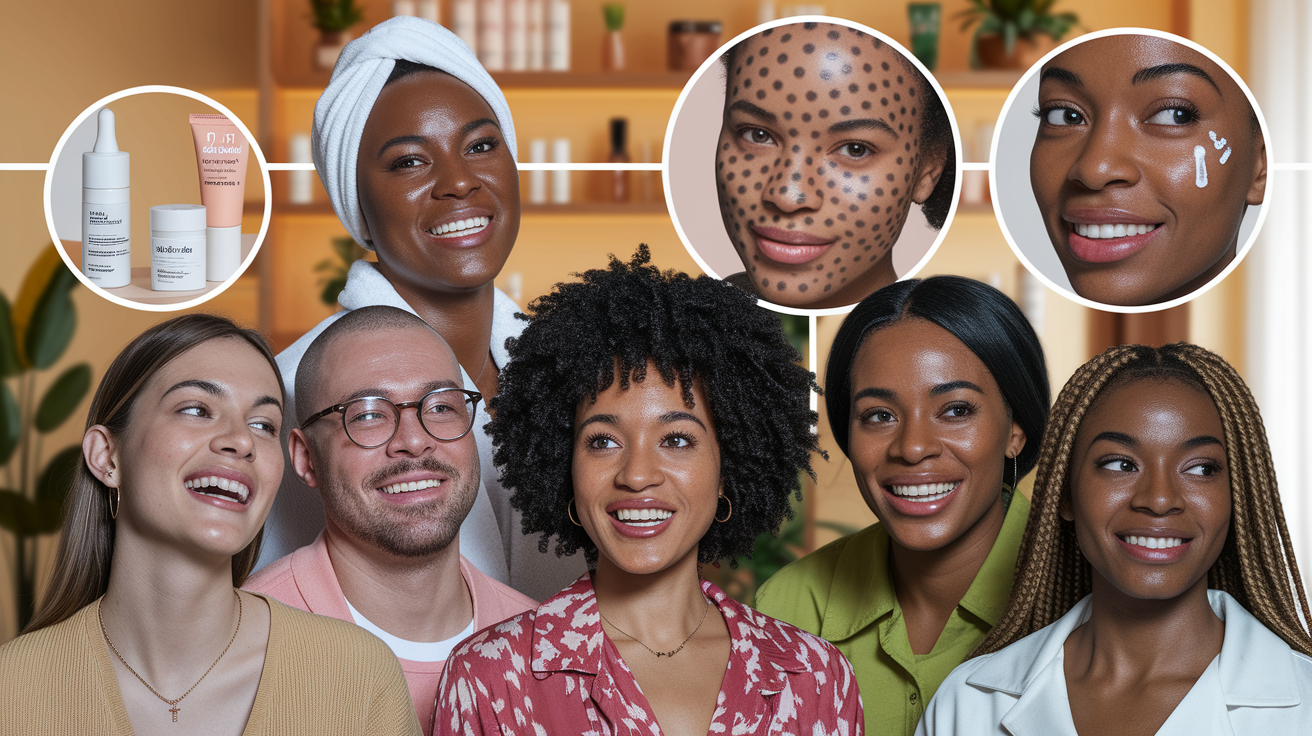
It talks about a golden, sun-kissed complexion, sculpted by melanin and undertone. Skin tone is your surface color, undertone is the hue underneath. Undertones are warm, cool and neutral and olive tends to be a combination of neutral and warm along with a slight green tinge.
Most of us have uneven tone with multiple colors. Understanding your undertone guides selecting shades that resonate, but ease and confidence trump guidelines.
Common Myths
Golden skin burns less, but it still burns. Melanin does provide some inherent protection; however, UV damage does still occur, leading to sunburn and photoaging. To maintain healthy skin, broad-spectrum SPF 30+, reapplying every 2 hours, remains essential, as do shade and hats.
Those golden undertones transcend ethnicity. Warm skin tones peek out in all regions and across a broad spectrum of hues, from porcelain to ebony. Skin color and undertones are two separate elements, meaning a fair or deep complexion can exhibit golden undertones.
Golden skin isn't necessarily "glowy" or even! Dark spots, acne, redness, texture also occur across all tones. Uneven skin tone is a frequent reminder of post-breakout or sunscarring. Ingredients such as vitamin C and niacinamide can assist in maintaining a more uniform appearance.
Golden skin wrinkles and responds to pollution just as any skin does. Fine lines, dullness, sun spots — you name it — can start to appear over time without proper care. Daily sunscreen, a gentle cleanse, antioxidants, and consistent hydration establish a solid foundation for maintaining toned skin.
Unique Challenges
True-match foundations are hard to find when undertones lean so far warm or olive. Some 'warm' shades are orange or pink leaning, which renders skin flat or sallow in daylight.
Uneven pigmentation presents itself as dark spots, melasma, or harsh tan lines from a day at the beach. Color clash becomes more audible on warm skin because contrast scans quick to the eye.
Bad undertone products make faces look off—too red bronzer, concealer that gray's out dark circles, or powder that sucks out warmth.
Practical fixes help:
- Look for brands with olive, golden-olive lines, not just "warm."
- Check it in natural light. Swatch stripe tests behind jaw and chest.
- Try custom-blend bars or pro color‑matching services.
- Use color-correctors: peach for blue shadows, olive-friendly bronzers with golden-brown, not red.
Evolving Beauty
History swings: ancient art praised sun-warmed skin in some places while others prized paleness. Trade, class, and labor shaped ideals. Contemporary media for too long promoted limited hues.
Worldwide marketing now projects broader shadow palettes and praises undertones, along with olive's green-gold combination. Social and celebrities have expanded the silhouette—undertone test tutorials, daylight side-by-side swatches and rule-breaking bold color combos.
Discover your undertone to inform decisions, then rock the hues that make you feel amazing, whether they're saffron, teal or soft beige.
Conclusion
To cap it all, golden skin complexion narrates a luxuriant story. Warm notes peek through sun kissed browns, soft ambers and honey shades. Light reflects off of it mellowly. That glow connects to genetics, sun, care and day-to-day habits.
To maintain that glow, apply consistent care. SPF 30+, or higher. Soft wash. Ceramide (or squalane) moisture. Vitamin C during the day. Retinol at night if skin tolerates. For style, rely on warm earth tones, gold jewelry and soft coral or berry. Consider linen in sand beige, or a deep teal scarf. Easy, solid choices.
To post the next step, ask a question, try out a tip, or post your shade match. Looking for a quick routine by skin type? Just say the word.
Frequently Asked Questions
What is a golden skin complexion?
Golden skin complexions feature warm undertones with slight yellow, honey, or olive tones, making them a perfect match for flattering gold colors in makeup products. This skin color tans easily and rarely appears ashy, consistently radiating a sun-kissed glow throughout the year, regardless of changes in tone.
How can I confirm my undertone is golden?
Verify in natural light to determine your skin undertones. Gold jewelry complements better than silver, especially for those with warm undertones. White shirts are prettier in off-white or cream. A golden skin tone pairs well with foundation shades labeled "warm," "golden," or "olive." Still not sure? Shade-match with a pro.
What ingredients support a healthy golden glow?
Seek out vitamin C, niacinamide, ceramides, and hyaluronic acid for healthy skin. Daily broad-spectrum SPF 50 is essential. For mild exfoliation, opt for lactic or mandelic acid, ensuring hydration and sun protection keeps your skin glowing, avoiding dullness or dark spots.
Which colors in clothing and makeup flatter golden skin?
Earth tones, warm neutrals, and jewel tones shine: camel, rust, terracotta, olive green, teal, emerald, and coral. For makeup, opt for warm foundations that complement your skin undertones, peach or apricot blush, and golden bronzers.
How does sun exposure affect golden complexions?
Golden skin, often associated with warm undertones, can tan quickly but still suffer from UV damage. UV rays incite hyperpigmentation and uneven skin color. Wear SPF 50, reapply every 2 hours outdoors, and protect your skin with hats and sunglasses. Once the sun sets, slather on antioxidants and soothing hydrators to guard your healthy skin glow.
Are there cultural differences in defining "golden" skin?
Yes. Numerous societies have special terms and ideals for golden tones, often influenced by skin undertones. While meanings differ geographically and historically, prioritize healthy skin and love your natural undertone instead of chasing the trend or shade shift.
Can lifestyle choices enhance a golden tone naturally?
Yes, prioritize sleep, nutrition, and hydration for healthy skin. Consume colorful, antioxidant-rich fruits and vegetables, focusing on those with subtle hues. Control stress and work out regularly for a natural glow. Consider lifestyle changes that support skin health and maintain your golden tone's natural radiance.